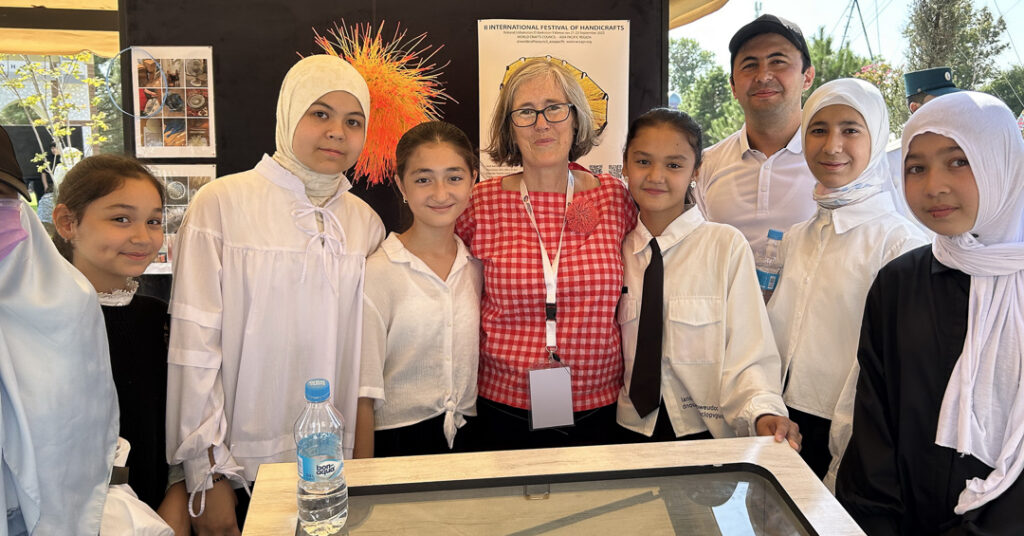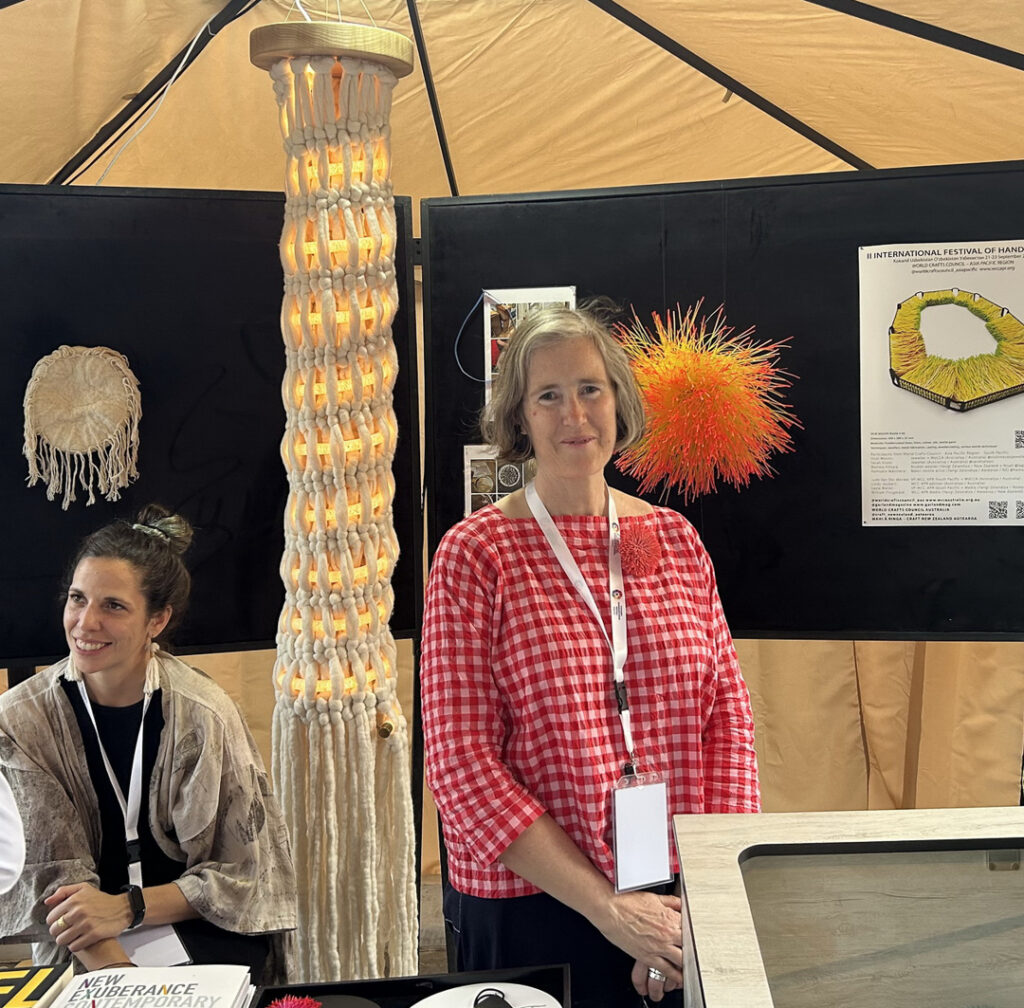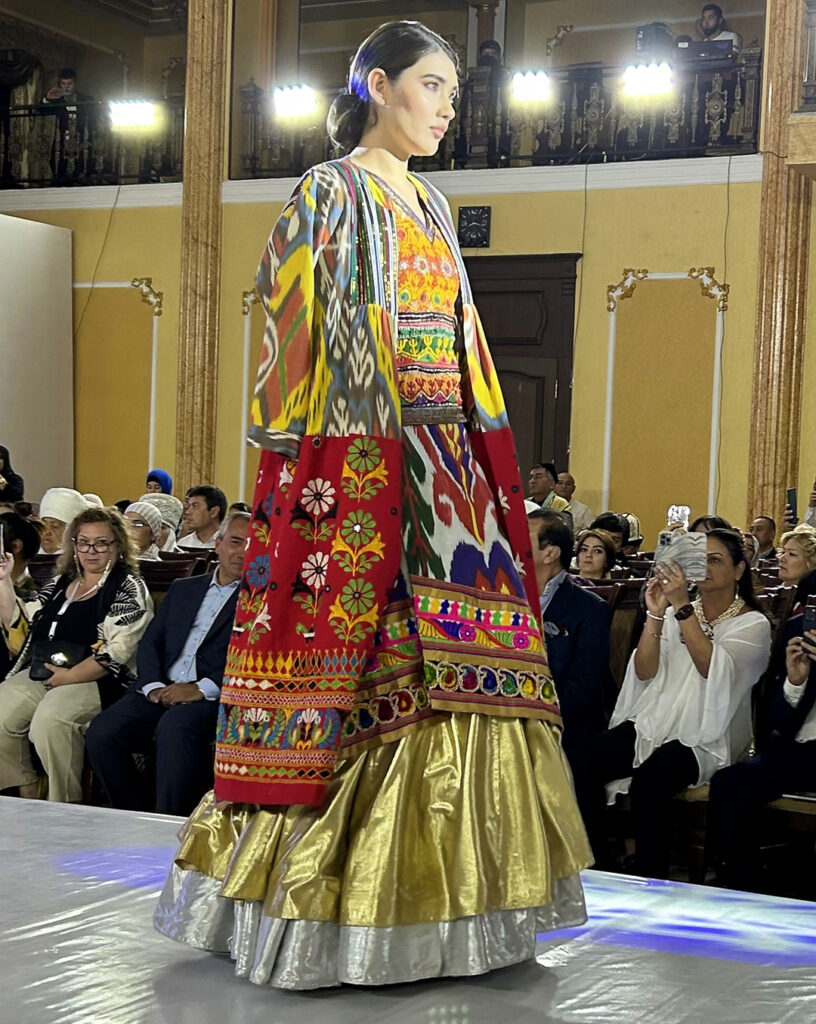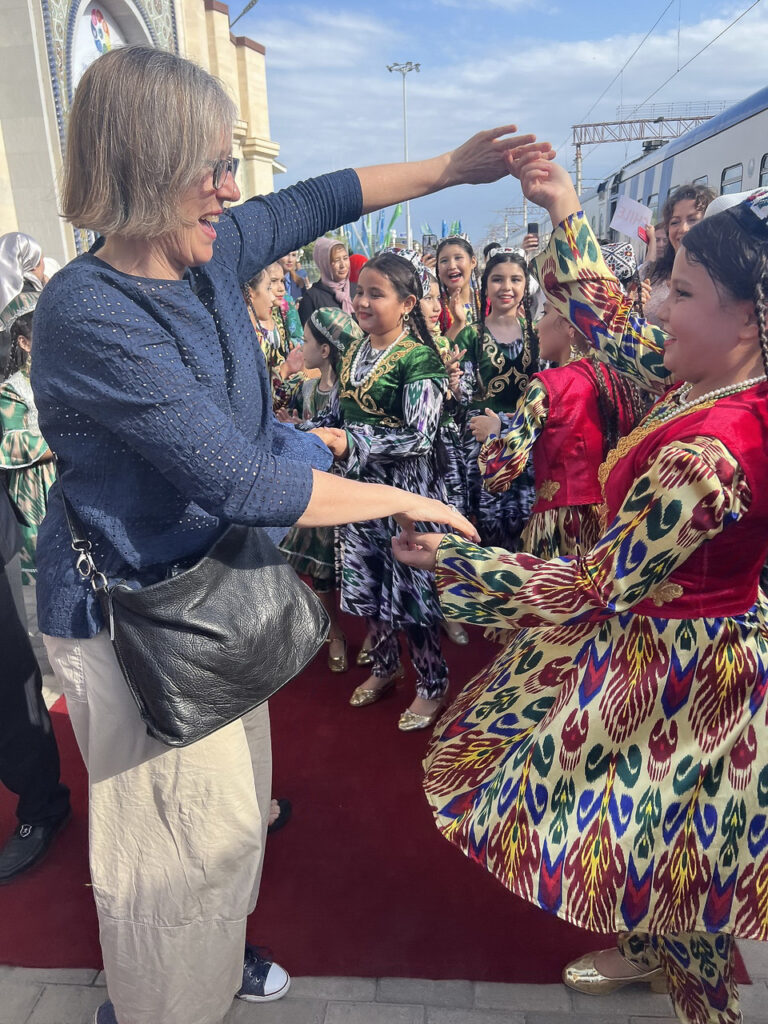Vicki Mason shares her experience of the enveloping Uzbek hospitality and south-south connections at the International Festival of Handicrafts
It was my good fortune to be selected by the Uzbekistan committee running the II International Handicrafts Festival in Kokand to show my work and attend their three-day festival in September. And what a joyous wild ride of a festival it proved to be. My Uzbek hosts were hospitable, generous, warm and natural dancers. I had heard they love to dance and the best words to describe something of what I experienced were ‘seduced’ and ‘mesmerised’, as I too was drawn into many mini dance-a-thons over my time at the festival where kaleidoscopic fabrics and tassels swirled and whorled. An Uzbek zest for life was palpably expressed through music and dance as we got off the train on arrival, in the festival’s epic opening and closing ceremonies and the ceremonial opening parade. I also encountered spaces in amongst the craft pavilions set aside for dancing, singing folk songs and playing traditional stringed gijak, dutar, tanbur and doira (drums). In fact, thundering music permeated the air of the stunning bejewelled palace grounds for much of the time I exhibited my work there. A local explained that loud music was normal, the stuff of wedding celebrations and festivals and all part of Uzbek culture, character and customs.
I showcased my jewellery in a pavilion on a main thoroughfare alongside seventy or so other countries’ master craftspeople and international craft organisation representatives. Dotted around this street in amongst towering trees, 1000–1200 local craftspeople from the region exhibited their work. A generosity of spirit expressed through humour, the humble smile and hellos served as tools we all used to engage with one another as we connected and shared our work. Where spoken English united us, the stories underpinning the varied symbols and motifs used in works were told. Materials, processes and techniques employed were explained and how the objects might be used were outlined. Many masters demonstrated processes and techniques, generously answering questions and sharing know-how. The passing of skills in the master–student model appeared to be alive and well in Kokand as I witnessed concentration and joy on the faces of young children, teenagers and young adults engaged in making alongside their elders. I subsequently read that many Uzbek centuries-old handicrafts are preserved and developed as they are passed through family lines over many generations.
- Off the train and dancing
- Vicki Mason and Cindy Lilen – Argentina and Australia
- Palace of Khudayar Khan
- Local textiles on show in Fashion show
- A very busy festival
- Dancing on arrival
I had taken work to demonstrate but a huge demand from locals seeking to engage me in conversation to practise their English meant I took on the role of part-time conversational English teacher. This, combined with requests for photos proved to be an unexpected pleasure as I gained deeper insights into the Uzbek people. At the end of day two the relentless smiling and laughing resulted in sore facial muscles, which was a new experience for me. It was testimony to our human need to connect: that craft enabled this was magic.
I became fast friends with my tentmate Cindy Lilen from Argentina. Cindy exhibited beautiful textile lights and we navigated the fluidity of the festival program together. We shared treasured moments as we connected and engaged with a diverse audience including interpreters, honoured guests, curators, industry experts, locals from Kokand, international travellers, media contingents and fellow makers.
Kokand holds the status as a cultural centre in Uzbekistan and is a World Crafts Council ‘World Craft City’. Unique and original craft traditions are deeply embedded in this community and society. Encountering a city and country where craft is viewed as an honourable profession of value and worthy of government support at both a local and national level was eye-opening. The president of Uzbekistan attended the event and the mayor of Kokand swung by everyone’s exhibits to shake hands, welcome us and look at work. It transmitted a value message that remarkable objects, the skills to make them and the treasury of craft traditions and stories that underpin them matters.
This valuing of the handmade to the extent I witnessed is scarce in my own country. When asked if we have an international festival of this kind in Australia I felt saddened as I answered no, having to explain that our leaders for the most part continue to erode support for making and manufacturing. It is not seen as integral to our cultural life and national identity, and we are the poorer for it.
A constant sense of discovery permeated my time at the festival as I saw and learnt about the myriad of world crafts on show. Touching the exquisite hand-dyed and woven Uzbek adras and ikat cotton/silk fabrics and learning about the plants used to dye them was fascinating. Watching masters wrangle gold and silk threads as they embroidered suzani and gold embroidered masterpieces with quiet honed precision was awe-inspiring. Many of the striking local fabrics featured in uniquely designed clothes were shown in a fashion parade that formed part of the festival’s many activities and events.
Celebrations of any kind build community and my time spent in Kokand left me feeling hugely enriched, valued as a professional and part of a world community of makers supported by advocates for the handmade. I can’t thank those involved enough. Putting on an event of this vast scale that also included masterclasses and competitions with prizes (one of which I won an award for) was icing on the festival’s cake. Craft is a language that all cultures have in common, it connects us all. Building cross-cultural connections in Kokand was a precious experience I hold close to my heart.
II International Festival of Handicrafts, 21 – 23rd September, 2023, Kokand, Fergana Region, Uzbekistan
About Vicki Mason
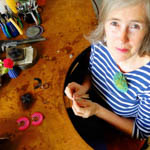 Vicki Mason is a jeweller who lives and works in Naarm (Melbourne). Her interest in jewellery stems from a belief that jewellery has the capacity to provoke a viewer to respond or interact with a worn jewel, and therefore the wearer. A dialogue is opened up—jewellery then acts not only as a portable tool for the communication of ideas but as a social object. Vicki is interested in unpacking our relationship with plants within the contemporary context to build knowledge and raise awareness about the natural world in a technologically focused age. Visit www.vickijewel.com.
Vicki Mason is a jeweller who lives and works in Naarm (Melbourne). Her interest in jewellery stems from a belief that jewellery has the capacity to provoke a viewer to respond or interact with a worn jewel, and therefore the wearer. A dialogue is opened up—jewellery then acts not only as a portable tool for the communication of ideas but as a social object. Vicki is interested in unpacking our relationship with plants within the contemporary context to build knowledge and raise awareness about the natural world in a technologically focused age. Visit www.vickijewel.com.

